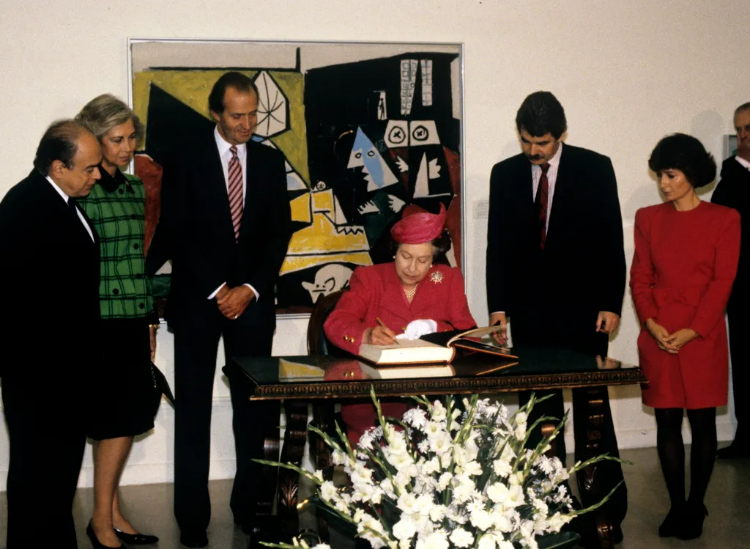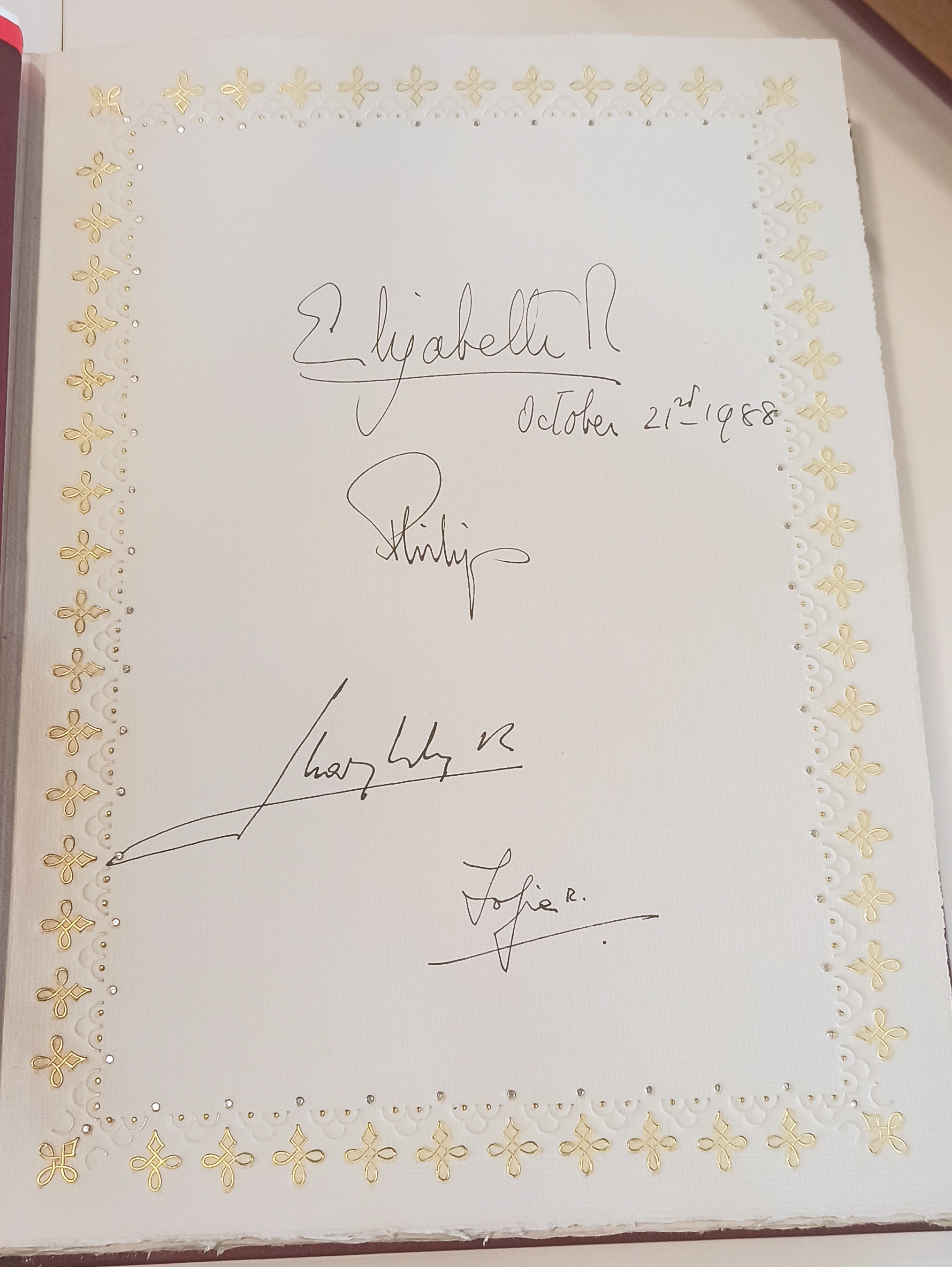Authorities, Picasso, and 1992 Olympics T-Shirts: Queen Elizabeth's 1988 visit to Barcelona
Late monarch went to Catalan government HQ and Olympic Stadium, and faced a pro-independence protest

If she was previously unaware of the fact, on October 22, 1988 Queen Elizabeth II found out that England and Catalonia have one major thing in common: their patron saint, Saint George, or Sant Jordi.
Her only official visit to Spain during her reign, she spent not even a full day in Catalonia but got a taste of the very basics of the country: the shared patron saint, long history, good food, bustling arts scene, numerous layers of administration, its ambitious Olympic project, and the pro-independence movement.
Newspaper reports from the day, such as those by La Vanguardia and El País, explain that shortly before 11 am, she arrived at Barcelona's Plaça Sant Jaume, the site of the Catalan government headquarters and the Barcelona city hall, along with her husband, the Duke of Edinburgh.
Around 1,000 people welcomed the monarch, who was also accompanied by then-Spanish King Juan Carlos and his wife, Queen Sofia.
Firecrackers were also heard, which some could have interpreted as a greeting, but in fact came from a protest organized by pro-independence grassroots association La Crida – an entity that no longer exists but that could be the current equivalent to ANC or Òmnium.
The incident had no further impact on her visit and after some music was played, the two royal couples were greeted by the then-Catalan president, Jordi Pujol, at the gates of the Palau de la Generalitat, the Catalan government headquarters.
Saint George, omnipresent
Once inside, Pujol told Elizabeth II that his first name is the same as the shared patron saint.
To make sure she would recall it, he gave her a gift: a replica of a 1536 statue of Saint George made by sculptor Melchor Bravo – he may also have pointed out that the statue on the Palau's façade honors Sant Jordi.
Yet, if it was not enough, the meeting they held with all the Catalan ministers, MPs, and parliament speaker took place in the solemn Saló de Sant Jordi room.
After the visit, Elizabeth II crossed the square to meet the then-Barcelona mayor, Pasqual Maragall, who was accompanied by his wife and fellow members of the local council.
The mayor showed her the mosaics in the Saló de Cent, which represent the city's old 'gremis', or guilds, and gave her some engravings dating back to 1764.
Picasso Museum and Cobi the dog
Without much more time than a quick stop, Her Majesty, along with 40 vehicles taking part in the visit – no surprise there were massive traffic jams – went to the Picasso Museum in Barcelona's old town Born neighborhood. It was a special request of her office.
She could not stay more than half an hour, but she was able to see the artist's reinterpretation of Velázquez's Las Meninas.

After the visit to the museum honoring the southern Spanish cubist artist who lived in Catalonia for several years, she went on to her next stop: knowing more about the most exciting project the city was building, the Olympic Games. Barcelona had been picked as the location of the 1992 Olympics two years earlier.
Queen Elizabeth visited the Olympic Stadium's refurbishment works where she was met with a big round of applause from the 500 workers. She was also informed of the works to build a new indoor stadium, Palau Sant Jordi – at that stage, the site of the venue may not have come as a surprise to her.
She may have been struck by the transformation of the entire hill, Montjuïc, into an Olympic ring with multiple venues, but what she showed more interest in was Cobi the dog – the Olympic Games mascot.
Indeed, she personally asked mayor Maragall for Cobi T-Shirts for her grandchildren, leaving her visit with a bag full of Olympic memorabilia.
Sardana dancing and kids expecting to see the crown – literally
A lunch with local authorities at the Palau de Pedralbes royal palace, in Barcelona's wealthiest neighborhood, followed. This moment of relative rest was ideal for the visit's organizers to show the Queen the sardana, Catalonia's quintessential dance. Even mayor Maragall and Pujol's wife, Marta Ferrussola, danced.
In the afternoon, the inauguration of a new building at the British Kensington School in the Catalan capital awaited her, along with a crowd of students, some of whom were disappointed by the fact that she was not wearing her crown.
An official reception at the 'Britannica' boat followed, where she was able to meet her hero, at least of that day: illustrator Javier Mariscal, the creator of Cobi.
At some point in the evening, the boat – with the Queen but not the 100 people attending the reception – set sail; it was the end of Her Majesty's official visit to Catalonia.
Yet, her trip did continue in a more discreet and recreational way not very far from Catalonia: in Mallorca. Queen Elizabeth had, unbeknownst to her, behaved like a true Catalan, spending her holidays in the nearby Balearic Islands.